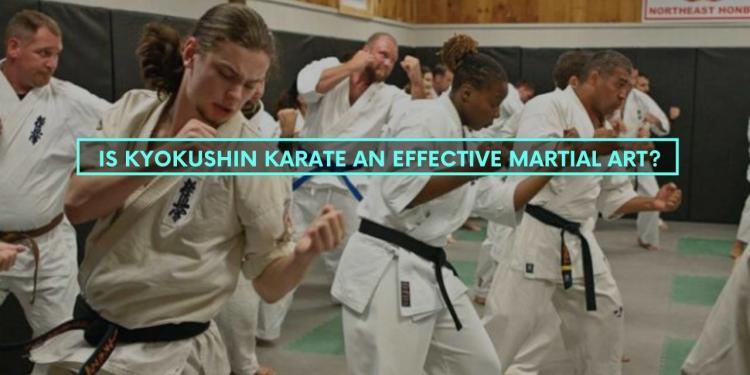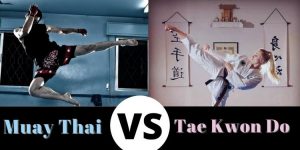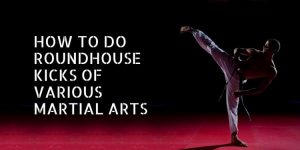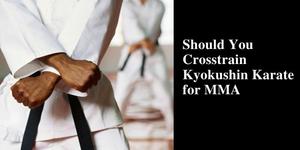Kyokushin karate is one of the more well-known full contact karate styles, thanks to MMA stars like Georges St. Pierre and Uriah Hall. There is no question that kyokushin karate is one of the more hardcore karate styles, but how effective is it in the ring and in the streets? In this article, we will explore the effectiveness of this popular karate system.
Importance of Sparring
Any system that claims to be effective needs to train with resistance and realism. That is where sparring comes in. I truly believe all martial arts can be effective if sparring is done on a regular basis. This is why jiu jitsu is so effective—you can test what you learn against 100 percent resistance.
Kyokushin is a karate system that emphasizes sparring. There is a lot of (hard) sparring in kyokushin. When I took it, I think we sparred at the end of every class. Since there is a lot of sparring in kyokushin, condition is vitally important in the system.
Since the system doesn’t let you punch to the head, people you spar will invariably go to the body with the punches. And because there no gloves, you will feel the knuckles very time you get punched. Kyokushin people usually don’t spar with shin guards either.
After my first kyokushin class, I remember my thighs and abs were bruised for a week straight from body shots without gloves and kicks to the thigh without shin guards.

Beginning level sparring is really a battle of attrition—get close to each other, trade body shots and kicks, see who drops first. And because of that, people who train kyokushin consistently have extremely tough bodies and are better-conditioned than a lot of other traditional martial arts.
Close Distance Fighting
Another good thing about kyokushin karate is its ability to land effective strikes from close distance, both with the hands and the feet.
I would say that kyokushin has one of the better punching techniques in traditional martial arts. When I was training the art, we spent a fair amount of time learning how to use our hips and transition weight to increase power in our punches.
Kyokushin guys like to step a little off-angle to land body shots and then follow up with either a kick—they are extremely good at hiding their kicks behind a barrage of punches to the body.
One thing that many people do not realize about kyokushin is that knees and elbows are allowed. You just can’t knee or elbow above the collar bone. Because clinching is not allowed in kyokushin, knees and elbows come quick but don’t get the added force of pulling the opponent towards the knee.
Fighting Without Gloves and Shin Guards Has Advantages
Although it hurts to spar without them, they provide advantages over martial arts that spar with them.
Because you are not relying on wraps and gloves, you learn how to really make a fist and really punch. This is an inherent advantage karate has over martial arts that fight with gloves. Although it has not happened to me, I’ve heard stories of people who train kickboxing or boxing break their hand in a street fight because they didn’t punch properly or have a tight fist.
And when you fight without shin guards, your leg is conditioned take punishment from a kick or a check. So you won’t be surprised at the level of pain a kick or a check without shin guard would feel.
The Drawback of Kyokushin
The one major drawback is obviously the disallowance of punches to the face. The reason for this is because karate tournaments do not use gloves so it is to protect the hands and the face of the competitors.
Striking with punches to the head changes the game quite a bit. Although you can stand there and take punches to the body, it is hard to stand and exchange punches back and forth to the head.
Karate tournaments with modified rules allowing gloves does allow strikes to the head and some gyms do train with punches to the head.
Muay Thai Versus Kyokushin Karate
Although you will find a lot of people say muay thai is a more complete martial art. While that can be debated, there seems to be a trend of watering down muay thai in many of its schools, at least in the United States.
This is because many muay thai gyms concentrate more on the exercise aspect of the martial art than the self defense aspect. This is probably done for a variety of reasons. But I imagine the primary reason is because the vast majority of people who take kickboxing and muay thai do it to get fit and not to fight.
And while you may find some kyokushin schools that are McDojos, many of them seem to keep the old spirit of karate, paying a lot of attention to conditioning and hard sparring. This might be because many dojos are non-profit ventures of people who hold full time jobs whereas many muay thai schools are for-profit businesses so membership matters.
From my experience, the average kyokushin practitioner from a school that trains head punches seems to be the more effective fighter than the average muay thai practitioner. When I say average, I mean someone who is a casual practitioner with a couple years of experience. Again, this is from my experience taking both and going around to other gyms/dojos.
******
While this popular karate style is not a pretty art by any means—some might even say it is ugly—there is no doubt its effectiveness. Kyokushin is a radically effective art for learning distance control, leg dexterity, and physical and mental toughness. And it’s definitely a legitimate martial art that will be able to help you if it ever comes a time where you need to defend yourself.




